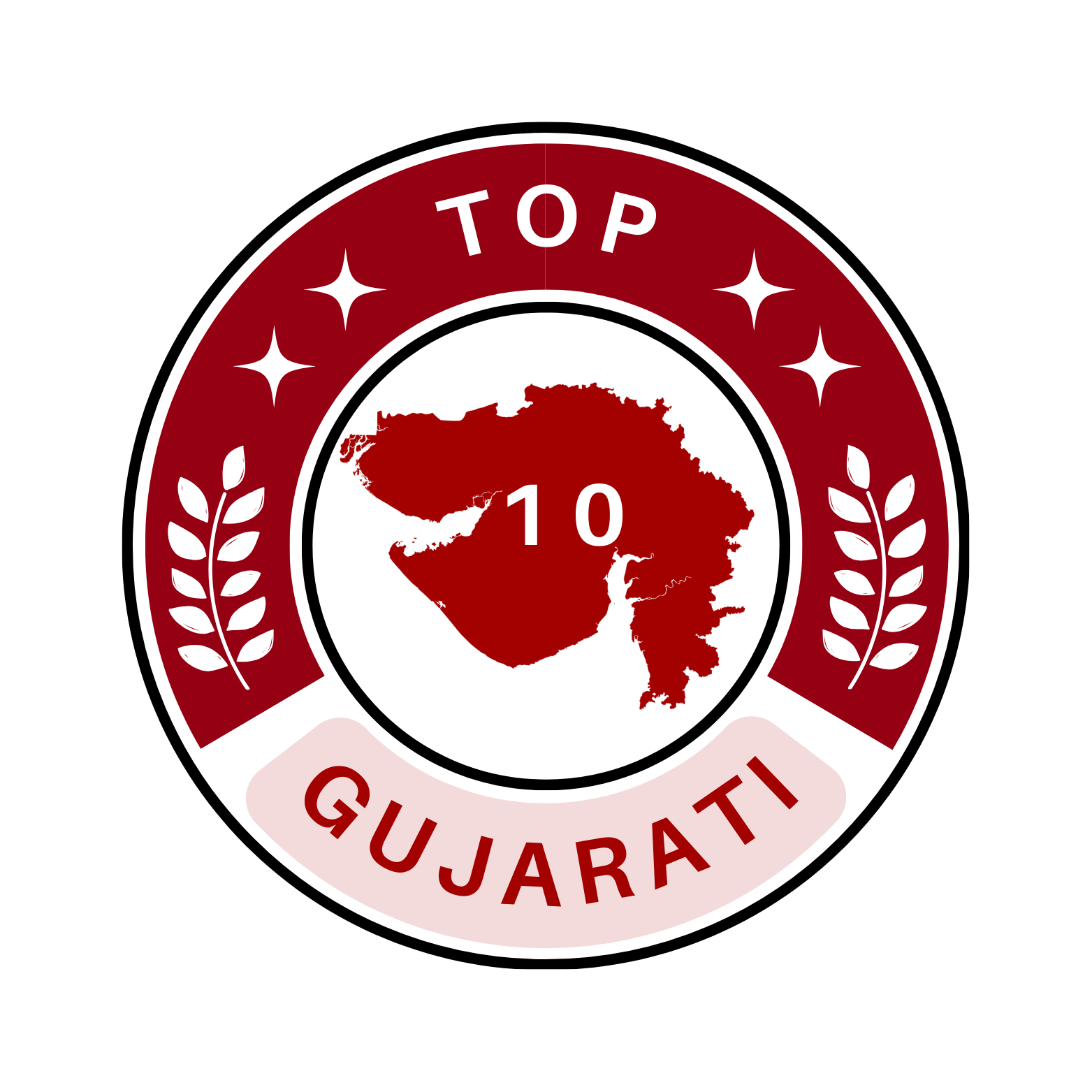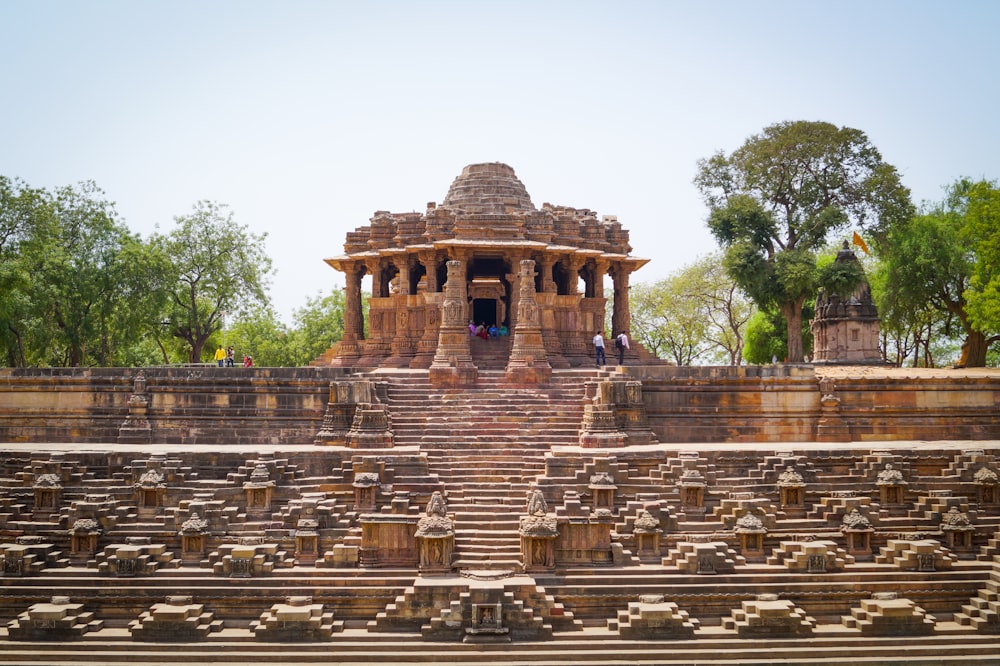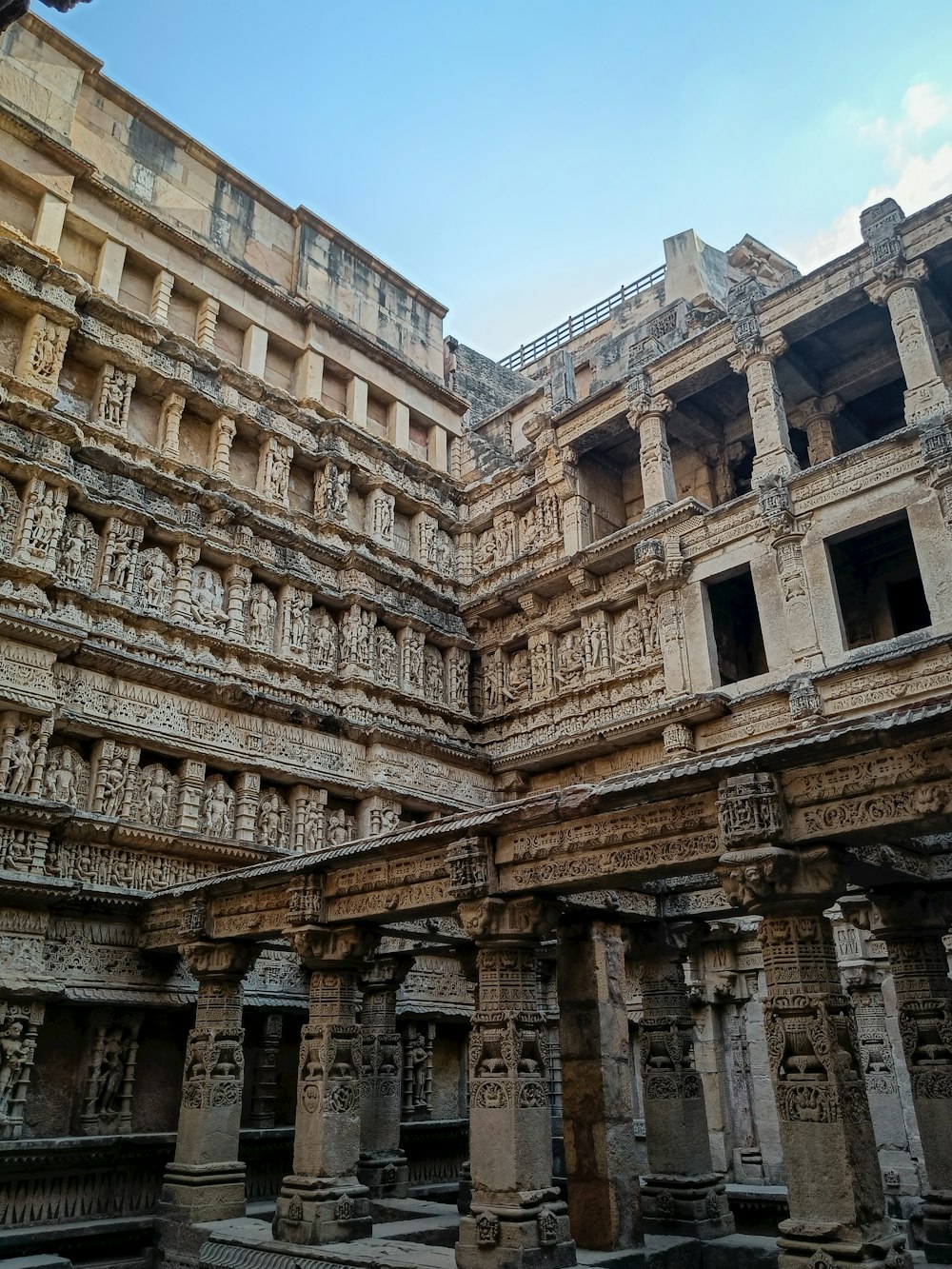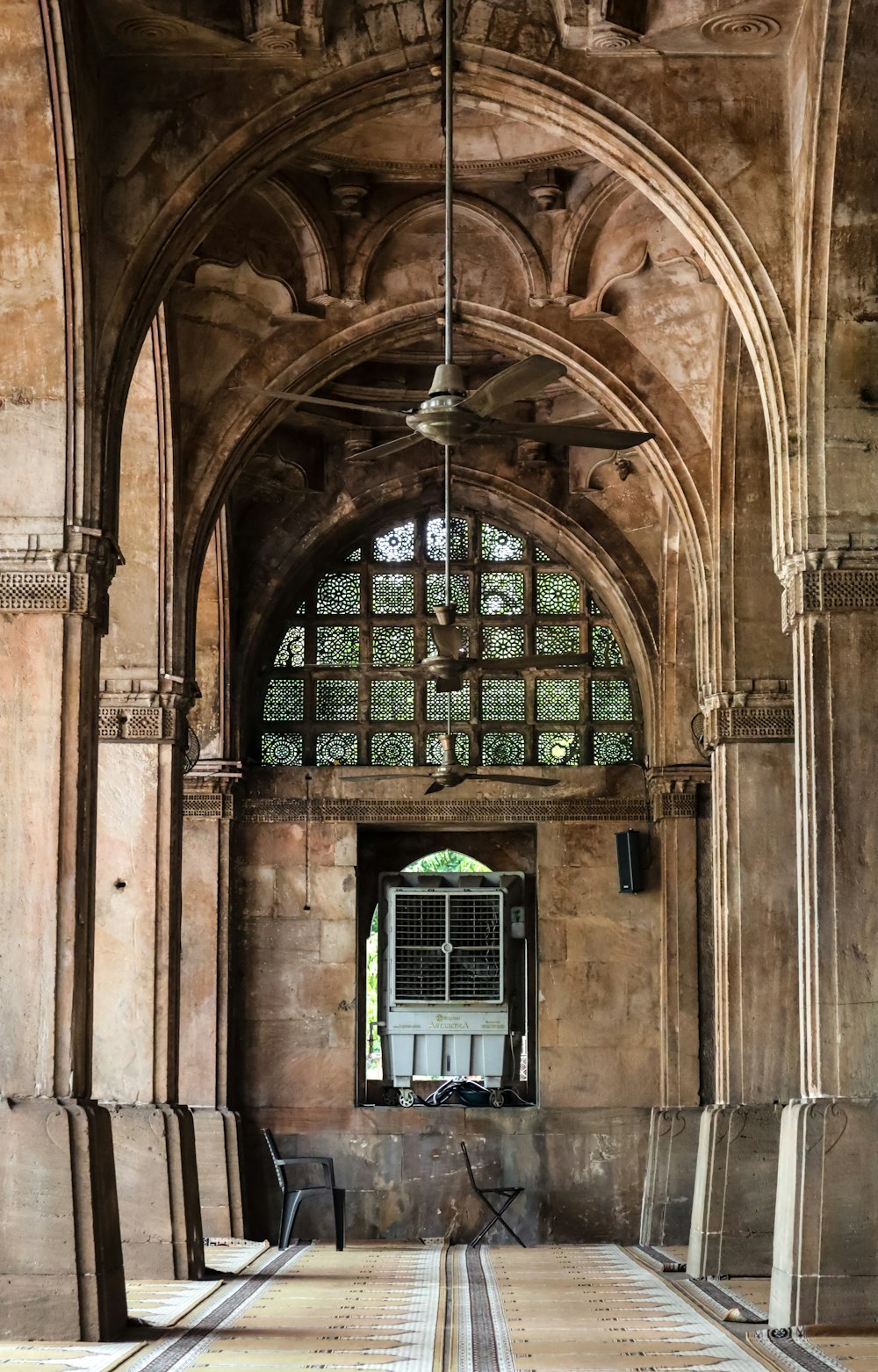Gujarat, a state in western India, is rich in history and culture, with numerous historical sites that showcase its heritage. Here are some of the top 10 historical places in Gujarat
1.Dholavira, Kutch

Dholavira is an ancient archaeological site located in the Kutch district of Gujarat, India. It is one of the five largest Harappan sites and one of the most prominent archaeological sites belonging to the Indus Valley Civilization.
Dholavira dates back to around 2500 BCE and is believed to have been one of the most important centers of the Harappan civilization. It was a major urban settlement with advanced urban planning and infrastructure.
Dholavira was inscribed as a UNESCO World Heritage Site in 2021, recognizing its cultural significance and its contribution to our understanding of the ancient Indus Valley Civilization.
2. Sun Temple, Modhera
The Sun Temple in Modhera is one of the most renowned and well-preserved temples in Gujarat, India. It is dedicated to the sun god, Surya, and is an exquisite example of ancient Indian temple architecture.
The Sun Temple is located in the town of Modhera, about 102 kilometers northwest of Ahmedabad, the largest city in Gujarat.The temple was built in the 11th century during the reign of King Bhimdev I of the Solanki dynasty. It is a remarkable representation of Solanki style architecture. The temple is designed in such a way that during the equinoxes, the first rays of the rising sun illuminate the main deity’s idol in the sanctum sanctorum.
The Sun Temple in Modhera is a true testament to the architectural and artistic achievements of ancient India. It stands as a reminder of the country’s rich cultural heritage and continues to attract visitors from around the world who are captivated by its beauty and historical importance.
3. Rani Ki Vav, Patan
Rani Ki Vav, located in Patan, Gujarat, is a magnificent stepwell and a UNESCO World Heritage Site. It is renowned for its exceptional architecture, intricate carvings, and historical significance.
Rani Ki Vav was built during the 11th century AD, under the patronage of Queen Udayamati in memory of her husband King Bhimdev I of the Solanki dynasty.Rani Ki Vav was designated as a UNESCO World Heritage Site in 2014, acknowledging its outstanding cultural and historical value.
Visitors to Rani Ki Vav can explore the intricate carvings, reliefs, and sculptures that adorn the walls as they descend the levels. The stepwell provides a unique opportunity to immerse oneself in the architectural and artistic brilliance of ancient India.
Rani Ki Vav stands as a testament to the artistic skills, engineering expertise, and cultural legacy of the past. It continues to captivate visitors with its breathtaking beauty and historical significance.
4. Dwarkadhish Temple, Dwarka

The Dwarkadhish Temple, located in the city of Dwarka in the state of Gujarat, India, is one of the most significant and revered pilgrimage sites for Hindus. Also known as the Dwarkadheesh Temple, it is dedicated to Lord Krishna, who is worshipped here in his form as the “King of Dwarka” or “Dwarkadhish.” The temple holds immense spiritual and mythological importance. It is believed to be one of the Char Dham Yatra sites, a set of four pilgrimage destinations that every devout Hindu aims to visit in their lifetime.
The city of Dwarka itself is believed to be one of the seven ancient cities (Sapta Puri) that offer spiritual liberation. It is mentioned in various ancient texts, including the Mahabharata.
Visiting the Dwarkadhish Temple and experiencing its spiritual atmosphere is a significant journey for devotees of Lord Krishna. The temple’s historical, architectural, and religious significance makes it a must-visit destination for those interested in Indian culture and spirituality.
5. Sidi Saiyyed Mosque, Ahmedabad
The Sidi Saiyyed Mosque, located in the city of Ahmedabad, Gujarat, is renowned for its exquisite stone lattice work and intricate architectural design. It is considered one of the most famous mosques in India due to its remarkable “Sidi Saiyyed Jali,” a delicate screen carved out of stone.
The mosque was built in the year 1572 during the reign of Sultan Ahmed Shah, the founder of Ahmedabad. It is believed that the mosque was constructed by Sidi Saiyyed, an Abyssinian (Ethiopian) nobleman who served in the royal household.
The Sidi Saiyyed Mosque is a popular tourist attraction in Ahmedabad, drawing visitors from around the world who come to admire the delicate stone work and appreciate the artistic mastery of the craftsmen from centuries ago.
The Sidi Saiyyed Mosque stands as a testament to the architectural prowess and cultural heritage of Gujarat. Its exquisite stone lattice work continues to captivate and inspire visitors, making it an essential part of Ahmedabad’s historical and cultural landscape.
6. Somnath Temple, Somnath

One of the most venerated and historic temples devoted to Lord Shiva is the Somnath Temple, which is situated in the Prabhas Kshetra close to Veraval in Saurashtra, Gujarat, India. The temple has been rebuilt multiple times after being destroyed by invaders, and it has enormous significance in Hindu mythology and history. It also represents resiliency.
It is stated that the Moon God Soma, who had been relieved of a curse by Lord Shiva, constructed the original temple out of gold. The temple is thought to be one of the twelve Jyotirlingas, which are thought to be Lord Shiva’s most revered dwelling places.
The temple is a center of pilgrimage for followers of Lord Shiva and has great religious significance for Hindus. One of the Lord’s holiest symbols is said to be the lingam in the sanctum sanctorum.
The Somnath Temple stands as a testament to the enduring spiritual and cultural heritage of India, symbolizing the strength to rise again after adversities.
7. Champaner Archaeological Park, Pavagadh

Gujarat, an Indian state, is home to the Champaner-Pavagadh Archaeological Park, a UNESCO World Heritage Site. The archeological, historical, and cultural significance of this location is well known. The ancient village of Champaner and the neighboring Pavagadh hill are included in the park, which is located approximately 47 kilometers northeast of Vadodara.
The natural beauty of Pavagadh hill is complemented by an exploration of the region’s rich history and architectural diversity for visitors to the Champaner-Pavagadh Archaeological Park. For those who are interested in learning more about India’s cultural legacy, archaeologists, and history buffs, this location is crucial.
8. Laxmi Vilas Palace, Vadodara

Vadodara, Gujarat, India is home to the magnificent Laxmi Vilas Palace, formerly known as Baroda. It is among the city’s most important and impressive architectural landmarks. The Gaekwad family, who ruled the former princely state of Baroda, lived at the palace, which Maharaja Sayajirao Gaekwad III constructed in 1890.
The Laxmi Vilas Palace, created by British architect Charles Mant, is a masterful fusion of European, Revivalist, and Indo-Saracenic architectural styles. Spanning a vast expanse, the royal complex boasts exquisite gardens, courtyards, and an impressive sculpture collection. The palace’s interior is just as lavish, with elaborate detailing, exquisite furniture, and a vast exhibition of artwork.
9. Bhadra Fort, Ahmedabad
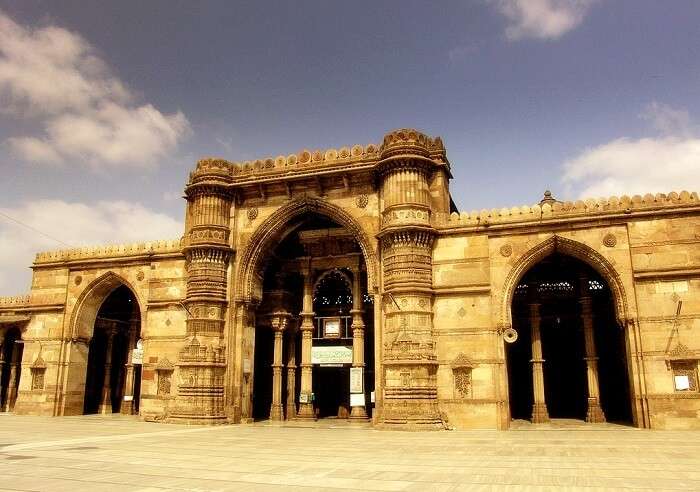
Ahmed Shah I, the man who founded Ahmedabad, constructed Bhadra Fort in the fifteenth century. For a number of the city’s monarchs, the fort served as their royal home.
The remarkable construction of the fort, which combines Islamic and Hindu forms, is what makes it stand out. The Bhadra Kali Temple and a number of other buildings are housed there.
Within the complex of Bhadra Fort are gardens, courtyards, and a palace. Over the ages, the fort has undergone repairs and alterations.
10. Aaina Mahal Palace, Bhuj
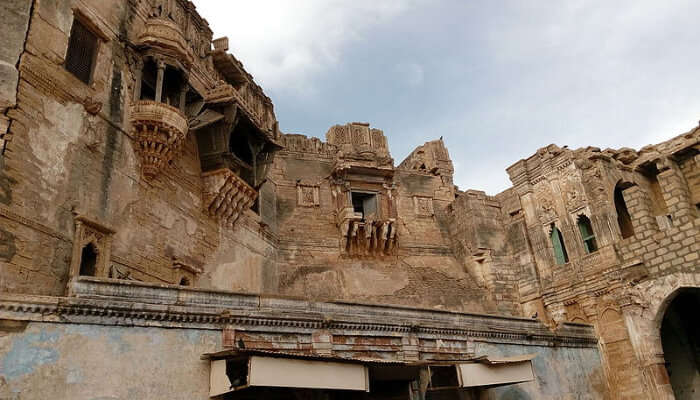
The historic palace Aaina Mahal, popularly referred to as the “Mirror Palace,” is situated in Bhuj, Gujarat, India. It was constructed in the eighteenth century, during Maharao Lakhpatji’s rule. The castle is well known for its elaborate craftsmanship and beautiful mirror work.
A distinctive fusion of European and Indian architectural styles may be found in the Aaina Mahal. The palace was designed by Ramsinh Malam, who was an artist of the Kutch region. The palace’s construction was finished in 1761.
